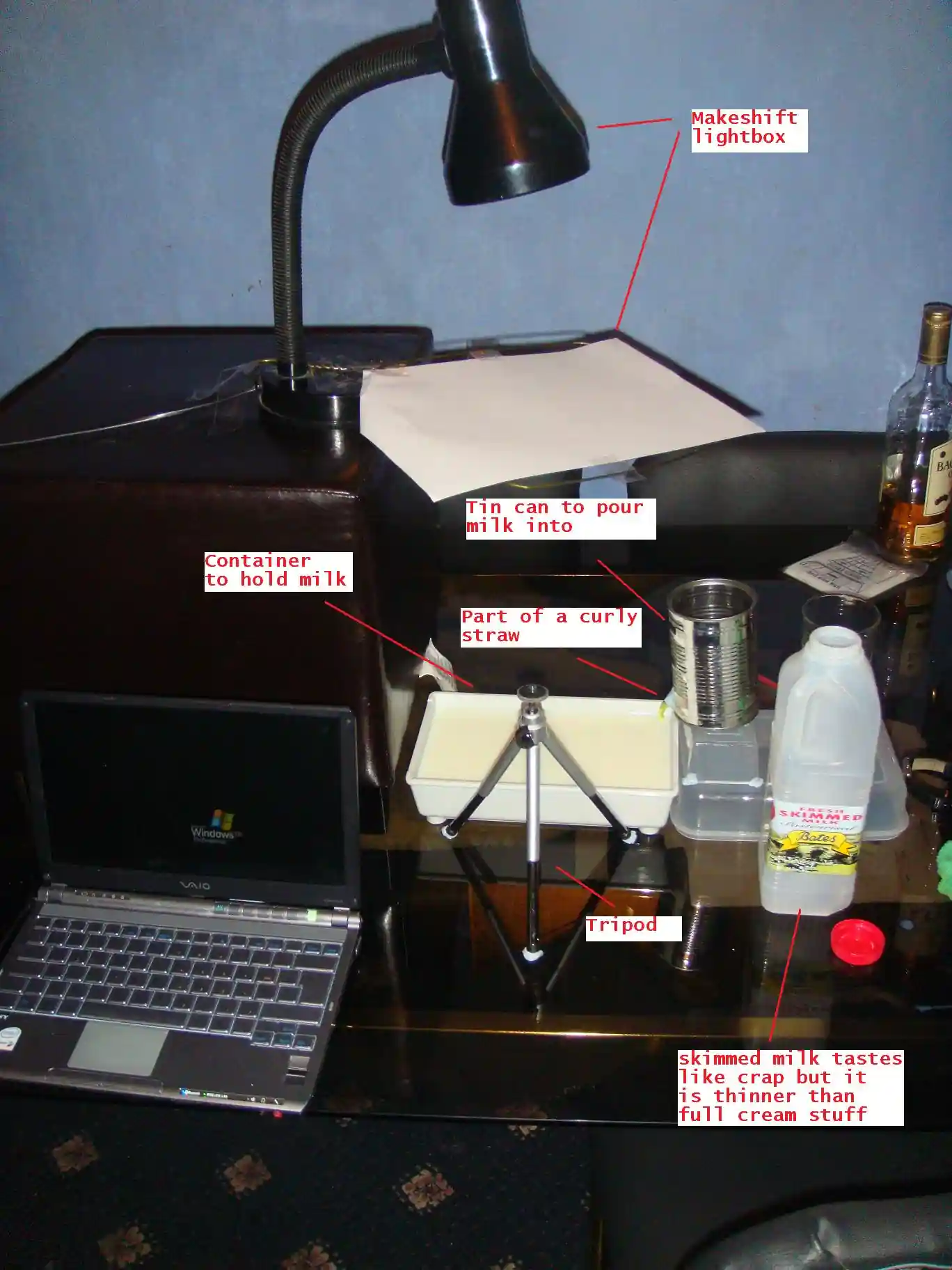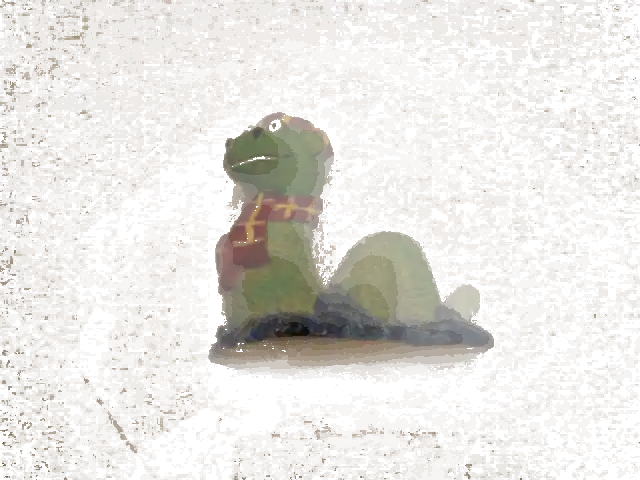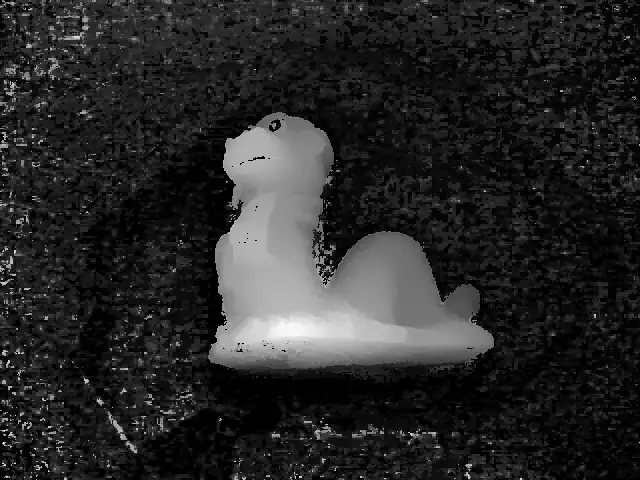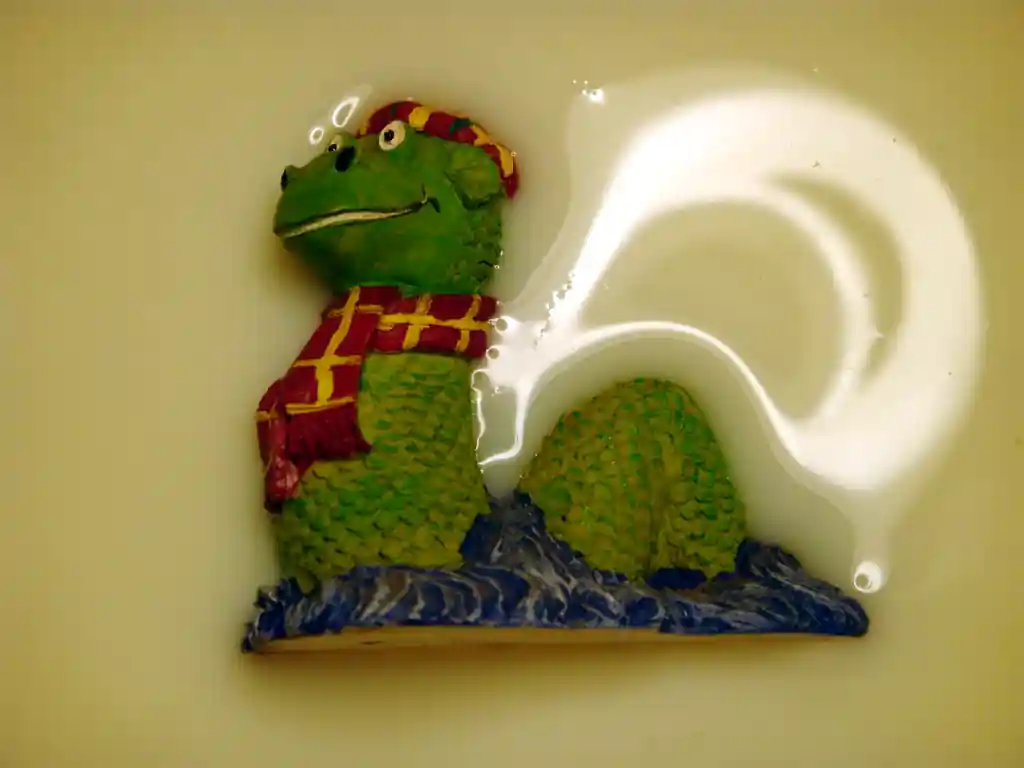🥛 Milk Scanner
A 3D scanner using a tray of milk. I can’t find the link right now but it wasn’t the first, and I can’t remember if it was an independent invention or not.
The setup looks like this:

Ingredients
- A makeshift light box using a desk lamp (stolen from my mum), a coat hanger, tape and a sheet of A4 paper. Taped to one of Katherine’s footstools.
- A tin can with a hole punched in one side, and a curly straw blu-tacked into the hole to pour the milk into the tray. The can probably contained soup.
- A tray that I guess had some kind of stationary in it.
- Kath’s compact camera and tripod, the camera did video.
- A volunteer ornament stolen from my mum, probably from a visit to Auntie Carol and Uncle Steve’s.
- A bottle of whatever that is. If it was any good it’d be empty.
Method
So you pop your item in the dish, point the camera at it, and record a video of it gradually submerging into the milk:
Take the output and run it through an edge detection filter, then this program [TODO: find code and link it here]
This looks at each pixel and records when it turned white. The longer it takes, the closer to the surface it is. Divide by the total time, and you have a depth map that can be used to reconstruct the surface.
Join with the diffuse channel, you’ve got a texture map with depth, that can be converted into a normal map or tessellated into a mesh:
 |
 |
Notes
SFM techniques made this approach worthless, but it’s still pretty cool. I did try a different approach using a laser but never finished that, similar way to how book scanners flatten pages.
Here’s a link to another one that someone made 7 years later.
